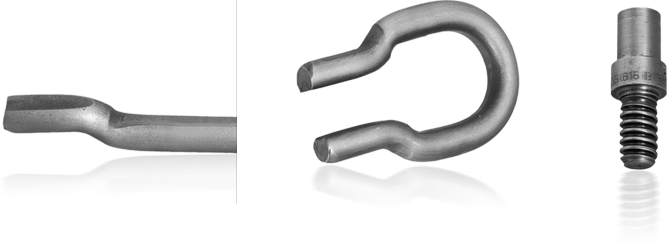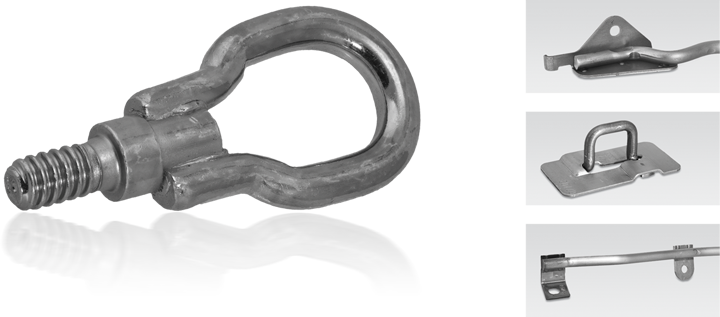| Stage I | Stage II | Stage III |


End stage
Diameter 1/2“, 2.4 sec. cycle time, welding at 150 kVA, welding threaded porting in correct position, series runs from 20,000 parts, finished part falling out, power requirement excl. welding approx. 25 kW
Welding
In general terms, welding is a manufacturing process used to join metal parts by heating them in order to create the fusion of the materials. In addition to melting the area of the parts where they will be joined, known as base material, the process sometimes introduces another material to help create the joint, and this extra material is known as the filler. Similarly, some welding methods require an element to protect the materials from the environment while they are melted, and the most commonly used is a shielding gas.
Common welding methods
There is a significant number of welding methods, the most common being:
- Gas Tungsten Arc Welding (GTAW) or Tungsten Inert Gas (TIG): Usually performed manually by an expert operator using non-consumable tungsten electrode and protecting the weld with an inert gas such as argon or helium.
- Gas Metal Arc Welding (GMAW) or Metal Inert Gas (MIG): Usually performed manually by an expert operator using a metal wire fed at a controlled speed and argon or a mix of argon and carbon dioxide (CO2) to protect the weld.
- Shielded Metal Arc Welding (SMAW): Usually performed manually by an expert operator using an electrode coated in flux to protect the weld. Slag also protects the weld while this gets cold, and it can be partially removed afterwards.
- Electric Resistance Welding (ERW): Also known as spot welding or seam welding, it is usually by using the electrical resistance of the material to generate the heat to form the weld.
Of course, there are other welding methods that can be used according to the materials and the application requirements. However, most of these methods require specific machinery, tools and materials to be performed. Moreover, they require an expert operator to guarantee high quality results by ensuring the weld is properly performed.
Welding as part of a complex process
The manufacturing of a part usually involves a series of stages in a complex process, and welding can be one of those stages. If we consider the time it takes to manual weld and the machinery, tools and materials required that add up to the whole process requirements, we can easily understand that the time to market for the part will be extended and the production costs will be increased.
To avoid those negative, Schmale Machinery offers fully automated solutions for the welding processes, allowing you to achieve a high level of efficiency and productivity. Moreover, Schmale machines integrate this process as a stage of an entire production cycle that can include other processes such as bending, threading, swaging, and others.
Schmale automated welding solutions can weld wire with a diameter of up to 1″, which is fed into the tool set by automatic servoelectric feeders. The welding process is usually the last stage after the wire goes through the different processes to generate the expected results.
The entire cycle only takes around 2.4 seconds, depending on the number of stages involved. Series runs begin at 20,000 parts, which clearly represents an enormous increase in efficiency and productivity and a significant reduction in the time to market, meaning that the profitability of your business will be higher.
To have a better view of the process please refer to the pictures and videos.
If you are looking for an automated welding solution integrated in your production process, or you have any further questions, please do not hesitate to contact us and we will gladly help you.
